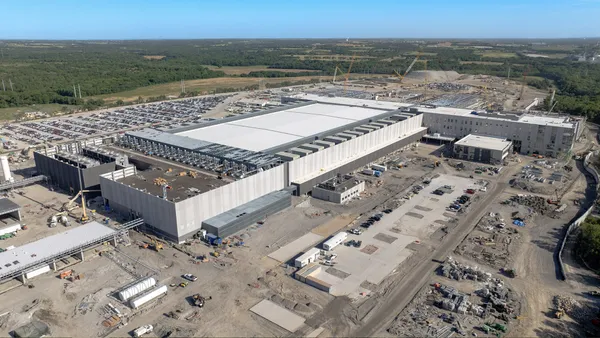Dive Brief:
- Hurricanes Harvey and Irma left destruction in their wake, forcing relief efforts in Texas and Florida to focus on repairing buildings and other critical infrastructure. While a subsequent spike in demand for building materials is to be expected, recent data from the Thomas Index reveals new insights into sourcing activity after storms.
- The index shows direct spending after the storm focused on procuring building and flood repair supplies. Buyers searched for steel building suppliers 1,700% more often than pre-Harvey and sought out plywood and drywall 400% more often after the storm.
- Indirect spending, meanwhile, sought out power, communication, transportation and relief supplies. Demand for communication systems increased by 10,000%, while trucking services were sought out at a 4,600% higher rate.
Dive Insight:
The Thomas Index data creates a baseline for future reconstruction efforts, as buyers and suppliers alike can look at the materials most in need, and use it to prepare for storms in the future.
The Thomas Index collects data from activity on ThomasNet.com — an online sourcing and supplier selection platform — and uses it to identify buying trends in various regions. The activity increases pictured in the tables above reflect the frequency of searches for a specific product or service in the Houston region in the two weeks after Hurricane Harvey's landfall as compared to search activity in the two weeks prior to the storm. Prior to the storm, buyers within a 250-mile radius of Houston's 77001 zip code focused their purchases on oil and gas industry needs, such as machining, pressure vessels and contract manufacturing. After the storm, buyers predictably searched for building supplies for repair work.
While the data is limited to the Houston region, comparing the data to trends in the regions affected by Hurricane Irma presents an opportunity to better understand what materials are in highest need after hurricanes. "In the immediate aftermath and recovery we should see very similar sourcing trends [for the two regions]," Shawn Fitzgerald, vice president of marketing at ThomasNet.com said. "As the regions get basic infrastructure for citizens back, they should diverge. Obviously, the Houston region will focus on components more heavily focused on the oil and gas industry, and Florida will most likely veer toward construction/real estate development and marine products and services."
Over time, Fitzgerald predicts buyers will purchase fewer immediate-response products and services — such as two-way radios, hospital beds and janitorial supplies — and focus on industrial infrastructure products that may help repair or rebuild what was damaged by water. Suppliers, meanwhile, will see an increase in small orders, so long as they can deliver quickly. "In the short term, you will see distributors getting many opportunities to fulfill the need on a smaller scale and then moving toward direct buys from OEMs for a large volume of products."
The data set provides a unique understanding of market mechanics after hurricanes, which was not available prior to the latest double-storm event. The last hurricane to affect Houston made landfall in 2008, when data-collection capabilities were less developed (the Thomas Index launched in June 2017). In Florida, Hurricane Matthew had a limited impact in 2016, and so data concerning its effects was not comparable to Irma. As a result, while tragic, Harvey and Irma created a comparable data set to understand how and when supply chains managers buy specific products.














